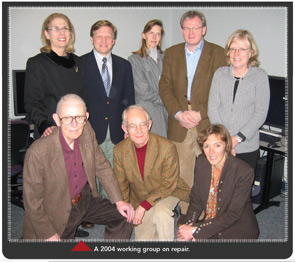
Attraction to Research
Dr. van der Heijde does not recall a time when she was not interested in medicine. Her curiosity, at an early age, about the body and how it works fueled her choice to enter premed training immediately after high school. First attracted to pediatrics, she changed her mind after a clerkship in internal medicine. Her first rotation was in rheumatology, where she met Dr. van Riel, who was then a rheumatologist and researcher at University Hospital in Nijmegen. She was drawn to rheumatology precisely because her patients had chronic disease. “What I liked a lot,” she notes, “was the [opportunity to] establish a longstanding relationship with patients.”
Dr. van Riel had already initiated his early arthritis clinic, and the department had received a government grant for clinical research. Dr. van der Heijde had found a perfect fit. “I’ve never been attracted to basic science,” she says. “It was the clinical aspect of research that attracted me most.” She accepted Dr. van Riel’s invitation in 1986 to join the program; the early RA clinic cohort became the subjects for her PhD thesis. Listen to Dr. van der Heijde reflect on working with Dr. van Riel to develop the Disease Activity Score.
Dr. van der Heijde plowed into the laborious work of collecting radiographs in the early arthritis clinic, which also included patients of Dr. van Riel’s earlier randomized clinical trials comparing sulfasalazine with hydroxychloroquine. He had done work during his PhD thesis on a disease activity outcome measure, but believed a better one was needed. His idea was the impetus for the development of the DAS. Dr. van der Heijde acquired more help from statistician Martin van’t Hof, PhD, who, she says, “didn’t just give me results from the data, but always worked through the methods together with me. I learned a lot from him about handling databases, which I have used in all the years afterwards.”
Elisabeth Lie, MD, PhD, currently with the department of rheumatology at Diakonhjemmet Hospital, has benefitted from Dr. van de Heijde’s conversance with statistics. Dr. Lie’s work has centered on the Norwegian disease-modifying antirheumatic drug register, the five-center Norwegian register established in 2000. “Dr. van der Heijde has been involved with helping me find the right angle and more interesting, up-to-date research questions and has been a very good support regarding the methodological side of these projects,” says Dr. Lie.